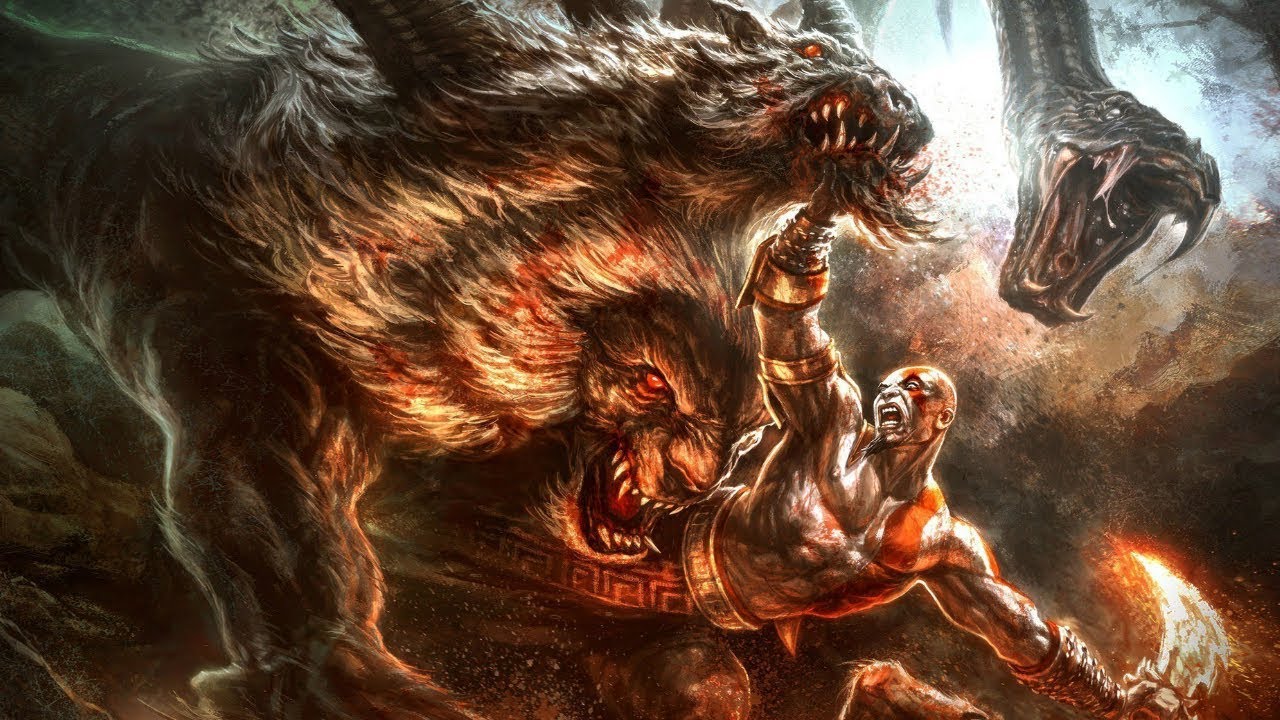In this video, Mythology & Fiction Explained delves into the captivating myth of the Chimera from Greek and Roman mythology. The Chimera, a fearsome creature with the body and head of a lion, a snake for a tail, and a fire-breathing goat head protruding from its back, was eventually defeated by Bellerathon, the son of Poseidon. As you watch the video, you’ll learn about the various versions of the Chimera’s appearance, its terrifying reputation as a bad omen before natural disasters, and the epic battle between Bellerathon and the monstrous beast. So, if you’re a fan of mythology and folklore, make sure to subscribe to Mythology & Fiction Explained for more intriguing tales like this one!
The Myth of the Chimera Explained – Greek/Roman Mythology

Introduction to the Chimera
The Chimera is a mythical creature that has captured the imagination of people for centuries. With its unique appearance and terrifying nature, the Chimera has become an integral part of Greek and Roman mythology. In this article, we will delve into the origin, symbolism, and role of the Chimera in ancient mythology, as well as its significance in popular culture today.
Origin and Appearance
The origin of the Chimera can be traced back to its parentage. According to most accounts, the Chimera is said to be the offspring of Typhon, a fearsome monster, and Echidna, a half-woman, half-serpent creature. This lineage explains the Chimera’s hybrid characteristics, as it possesses the body of a lion, the head of a goat protruding from its back, and a serpent for a tail.
Throughout history, the Chimera has been depicted in various forms. Some portrayals show the goat head as sprouting from the lion’s back, while others illustrate it as a separate head altogether. These variations in appearance add to the mythical allure of the Chimera and emphasize its fantastical nature.
Symbolism of the Chimera
The Chimera holds significant symbolism within Greek and Roman mythology. One prevalent interpretation is its association with volcanoes. The serpent tail of the Chimera is often seen as representing the fiery smoke and ashes that explode from a volcano’s crater. This connection signifies the destructive and unpredictable nature of volcanic eruptions.
Another symbolism attributed to the Chimera is its hybrid form. The combination of different animals into one creature represents chaos and the breaking of natural boundaries. It serves as a reminder of the inexplicable and sometimes dangerous forces that exist in the world.
Lastly, the Chimera is seen as a symbol of destruction. Its portrayal as a terrifying monster evokes fear and highlights the potential for devastation that lies within nature. This symbolism is often associated with the Chimera’s role as a bad omen, foretelling impending disaster.
Role in Greek Mythology
In Greek mythology, the Chimera is closely linked to its parents, Typhon and Echidna. Typhon, known as the father of all monsters, was a gigantic and powerful being. Echidna, on the other hand, was a half-woman, half-serpent creature, often depicted as the mother of monsters.
As the offspring of such formidable creatures, the Chimera inherited their monstrous traits. In Greek lore, the Chimera is known as a guardian and a ferocious monster. Its role was to protect a sacred spring near Licio, a region in ancient Greece.
The Chimera as a Bad Omen
The sighting of the Chimera was regarded as a dire omen in Greek mythology. Its appearance often foreshadowed imminent disasters, such as earthquakes, volcanic eruptions, or other natural calamities. The belief in this ominous association contributed to the fear and superstitions surrounding the Chimera.
The Chimera in Licio
Licio, the region in which the Chimera terrorized, was located in southwestern Asia Minor. The Chimera’s presence in this area spread fear and panic among the neighboring towns and villages. Its relentless rampage struck terror in the hearts of the people, who desperately sought a solution to their predicament.
King Low with Us seeks Help
The ruler of Licio, King Low with Us, was desperate for a solution to deal with the Chimera’s reign of terror. His kingdom was on the brink of destruction, and he knew he needed outside assistance to overcome this relentless threat. King Low with Us sent out a plea for help, hopelessly searching for a hero who could rid them of the monstrous Chimera.
Bellerathon and the Soothsayer Politis
Among those who responded to King Low with Us’ plea was Bellerathon, a brave and skilled warrior. Bellerathon had heard of the Chimera and its devastating ways, and he felt compelled to take on this formidable challenge. Accompanying Bellerathon was the renowned soothsayer Politis, who provided guidance and advice throughout their perilous journey.
The Role of Pegasus
In the quest to vanquish the Chimera, Bellerathon was aided by a divine creature called Pegasus. Pegasus, the winged horse, was known for its extraordinary speed and agility. It was with the help of Pegasus that Bellerathon would have a fighting chance against the Chimera, who possessed its own formidable powers.
Bellerathon’s Battle with the Chimera
Armed with his weapon and mounted on Pegasus, Bellerathon confronted the fearsome Chimera. A fierce battle ensued, with both sides determined to prevail. The Chimera unleashed its fiery breath and lashed out with its serpent tail, while Bellerathon fought valiantly, seizing every opportunity to strike at the monster.
The Death of the Chimera
After a long and grueling battle, Bellerathon managed to deliver a fatal blow to the Chimera. The creature was vanquished, and its reign of terror in Licio came to an end. The people rejoiced, grateful for Bellerathon’s heroic deeds and the deliverance from the Chimera’s grasp.
The Chimera and Mount Chimera
Following its defeat, the Chimera’s body was cast into the depths of Mount Chimera, a dormant volcano in Licio. This mountain is said to have derived its name from the Chimera, further emphasizing the connection between the creature and volcanic symbolism.
Conclusion
The myth of the Chimera has captivated audiences for centuries, offering a glimpse into the rich tapestry of Greek and Roman mythology. Its origin, appearance, symbolism, and role within ancient lore have all contributed to its enduring significance. As a symbol of destruction and chaos, the Chimera serves as a reminder of the forces that shape our world. Today, the Chimera continues to fascinate and inspire, leaving an indelible mark on popular culture.
